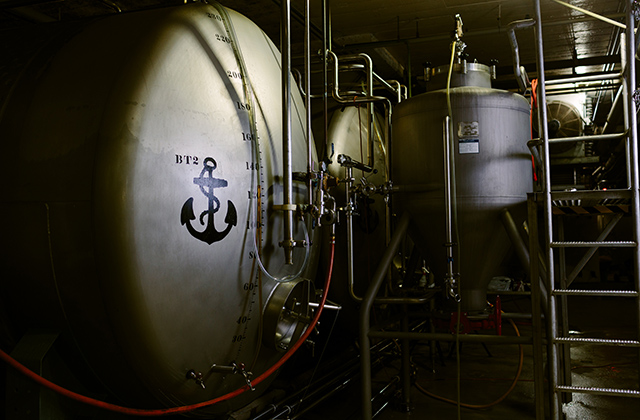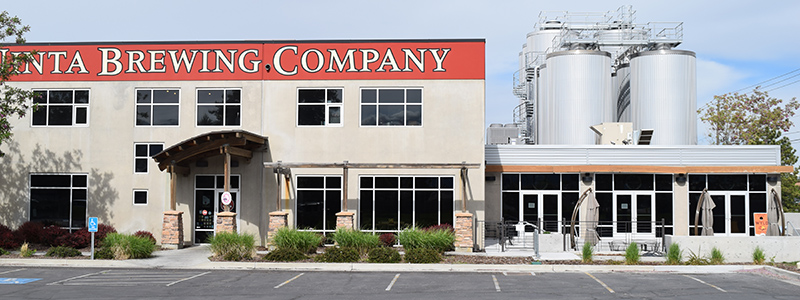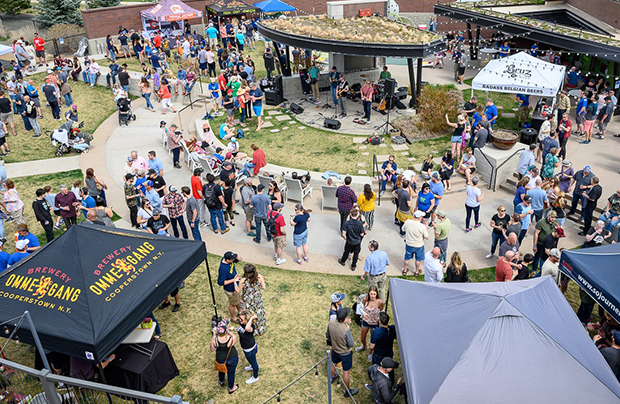
Point A. Point B. Seems simple enough. But getting equipment for your brewery is never that simple. The amount of preplanning and logistical effort happens for any brewery that is working on its first upgrade all the way up to veterans that are on rebuilds and expansions.
And all along the way, three main factors ring true: cost, quality and speed.
A fourth factor is also involved: people.
“Finding out what the internal goal or scope of what we want to get isn’t as well defined as you would think,” said Odell Brewing’s Maintenance/Engineering Manager Matt Bailey with a laugh. “Whatever it may be, defining how it will change internally first is so critical before going down any path.
For Odell, adding its new canning line was a process of 18 months, which included a discussion first of upgrading its bottling line. The research showed that cans would be a better solution. That also meant moving the brewery’s cold storage from on site to a new off-site facility to make room for the upgraded bottling line and new canning line.
“When you get a group of people together, no matter where in the brewery: brewers, operators, management or creative, you have to look for the goal, and how things change,” Bailey said. “You have to define that early so you are all on the same page, and that’s not easy. The size, the impact the what you are getting determines the whole project. As an engineer, I know that scope will change a bit, but knowing the general concept early on, you will find not everyone will have the same thing in mind.”
While preplanning can be tedious, yet necessary, after picking out the right equipment only means working with a supplier on a contract that can help a brewery’s staff stay streamlined. That means laying out guidelines in the contract such as lead times, installation timelines and length of training by the vendor after installation.
For Will Hamill, the founder of Uinta Brewing, the contract negotiations were vital to help spur growth from a 40-barrel three-vessel American-made brewhouse to its new 135-BBL, four-vessel German-made facility the brewery installed in late 2015. The brewhouse was completely made on site of the five-acre complex in Utah instead of being shipped over as a modular, which meant six months of welding alone. Once installed, Hamill made sure to have a German Brewmaster stay with Uinta brewers for four months after the system was up and running to work with the crew.
“It was a a very intensive install of a brewhouse,” Hamill said. “It was all pre-negotiated. It’s more expensive, but we needed wort and beer and we didn’t have time to figure it out on our schedule, we needed their help. We felt that was a good investment for us.”
Working with overseas vendors meant a new addition to the possible logistical problems, which saw most shipments come in via ship to a dockyard in Houston and then trucked to the brewery in Salt Lake City with one shipment going through the Panama Canal and being trucked from a port in California.
Hamill said its German supplier BrauKon had worked with logistics companies before, so he left the heavy lifting to them because of their experience.
“It’s very straightforward, not complex,” he said, noting Uinta pre-negotiated the delivery FOB (free on board) to the brewery.
“You could do all the paperwork and pay all those duty taxes to the government or hire a company that does it every day,” Hamill explained. “It was chosen that way because of the ease and I had a lot of things to worry about and didn’t want to add more things to my plate.”
A logistics company like Conceptum Logistics gets questions often from breweries looking to work with overseas shipments and it’s people like Torge Runge of the Brewery Equipment Transport Division that helps answer those questions.
“What we see a lot is breweries ordering a lot of equipment on door-to-door delivery terms,” he said. “The shipper takes care of delivery to the brewery, but it also bring problems over the transport, because there may be issues in customs, or the freight shows up late, which can mess up the construction schedule [for the brewery].
“We are trying to tell breweries that a logistics company could help with overseas shipments for them and keep them informed of the whole process and have visibility over the whole process.”
Sometimes all a brewery may think of is the larger picture of getting equipment send to its door. A logistics company can take care of other matters, like traffic escorts, setting permits and getting trucks in place for delivery.
“We just like explaining that it’s good to know what is coming on the front end,” Runge said. “The issue most with first time importers is to learn the process. They get so excited getting all the equipment there, but the older breweries know their things because they have been through that process.
“We want to be as involved in the process as possible. We walk brewers through the process and want to be an extension of the project.”
Regardless of a brewery’s size, developing specifics for your brewery on how you want equipment installed should be negotiated thoroughly.
“How the pipes are ran, delivery terms for at a certain point, efficiency of the equipment before signing off, I could go on and on,” Bailey said. “It’s important to make sure people attach vendors to the quotes that they give. But I also think it’s important to tell your vendors that your contract is an evolving document that is flexible. We started that five years ago and it’s not perfect since you do have to adapt and change.
“Having standards in the contact can make some vendors uncomfortable. And it’s nothing crazy in there, just stuff to protect us with what we want. And sometimes they can see those and back out and we know it’s not going to be a good fit.”
Making a switch to new systems largely depends on the space a brewery is working in, said Rhinegeist’s Operations Manager Cole Hackbarth.
“For production breweries keeping the old equipment running is a necessity until the new stuff is installed and dialed. When we upgraded our can line at Rhinegeist we kept the old line running while the new one was commissioning,” he said. “Even if sales demand hadn’t required it, we ended up falling several weeks behind schedule and keeping the old line running kept us afloat in the meantime.”
It was the same story at Golden Road, where Hackbarth had previously worked.

“We relocated the original can line with temporary utilities to keep it running while the new line was installed in its place,” he said. “When it comes to brewhouses there can be a lot of value to keeping a smaller system for experimentation and variety so the bigger system can focus on core production. At Rhinegeist we made over 100 different beers last year because we kept the original brewhouse. The ability to constantly innovate and have new small batch offerings has been a key to our success in an increasingly competitive craft market.”
At Anchor Brewing, Scott Ungerman, the brewery’s Brewmaster and VP of Production said the installation of a pilot system this year across the street from the main facility in San Francisco hasn’t been the hardest part of logistical planning recently. Instead, it was the upgrades to the refrigeration units on the roof along with adding new fermentors to the outside of the building.
Having contractors in and out and on schedule helped, even though Ungerman said that although companies were working starting at 5 a.m. and wrapping up by 9 that morning for installation of the newest fermentors, that meant trucks were lined up waiting to get in by the time work was wrapping up.
“But the trucks had to wait, it wasn’t pretty but you have to do what you have to do,” he said.
When it comes to planning for an upgrade outage, always plan for the worst, Hackbarth said.
“Brew and package extra before and try to plan it for a slow part of the year,” he said. “Know who your most important accounts and wholesalers are and have a backup plan to allocate appropriately when the project gets delayed.”
Bailey noted that the systems for Odell’s newest kegging line had to replace what had been a cooling unit before, so getting back online meant doing prep and being creative with what could be run over current electrical and plumbing. An entire renovation of a cooler system to a canning line took the brewery four intense months of work after all the preplanning.
And it all happened because of communication.
“Not one person is going to be able to come up with each scenario, so having people together so you can cover your bases because of the insight that everybody provides to help create a solid plan and get all the angles,” he said.
Hackbarth also said that since most projects will go over budget and take longer, build in contingencies for both.
“If this is your first brewery, a 40-50 percent contingency buffer is a good idea,” he said. “After you have reliable vendors and more experience a 10-20 percent buffer is usually enough. Just don’t forget about Murphy’s Law.”






Be the first to comment